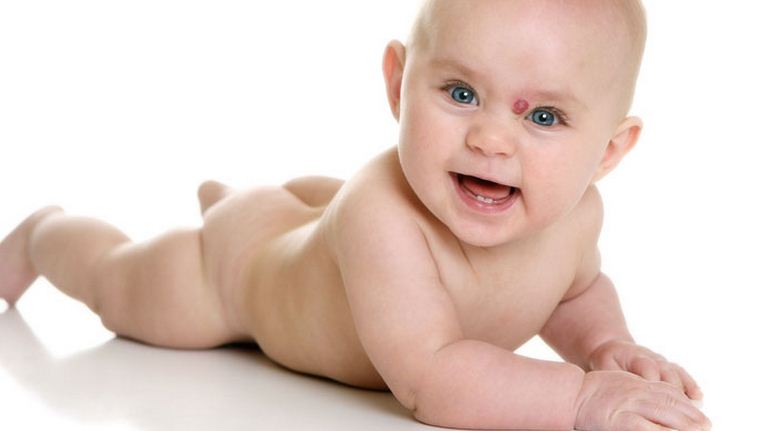
To help you feel a little better and more reassured, we have everything you need to know about birthmarks:
What is a birthmark?
A birthmark is caused when your baby's skin cells or blood vessels don’t develop properly in one area. Also caused there are problems with the development of capillaries and the cells that produce melanin, the cells that give the skin its colour, they can appear on any part of your child’s body.
What types of birthmarks are there?
There are various different types of marks, some you may have heard of and others that might be new to you:
1. Strawberry birth mark
Common in premature babies, they usually develop on the face or the neck but can also appear on other parts of the body as well. Medically known as infantile haemangiomas, they are soft, raised and red in colour, which is where they get their strawberry name from.
They generally start off small and grow bigger until your little one is around three months old when it will start to fade. Most will shrink and fade by the time your youngster is in school but, in rare cases, some kids may still have it when they are entering the tween years.
Generally the birthmark won’t need any interference medically but if it starts to affect their vision, feeding, breathing or self confidence you will need to seek medical advice.
2. Mongolian Blue Spot
Unlike the Strawberry mark, you might have never heard of the Mongolian Blue Spot – a mark that appears bluish on the skin. Typically found on kids with darker skin tones it is caused by melancytes being trapped in the skin. You are more likely to find this type of mark on your child’s lower back or bum.
3. Port Wine Stain and Salmon Patch
Both of these types of birthmarks are vascular malformations and may not appear until after the birth, sometimes even as late as childhood. Made up of small blood vessels or arteries and veins, most will need treatment as they can darker as your child grows. However a salmon patch mark will generally disappear after birth.
What to do if you are worried?
Most birthmarks are harmless and will typically fade on their own over time, however some might require treatment if they start to significantly affect your child in any way. If you are ever worried about your child’s birthmark you should contact your GP.




